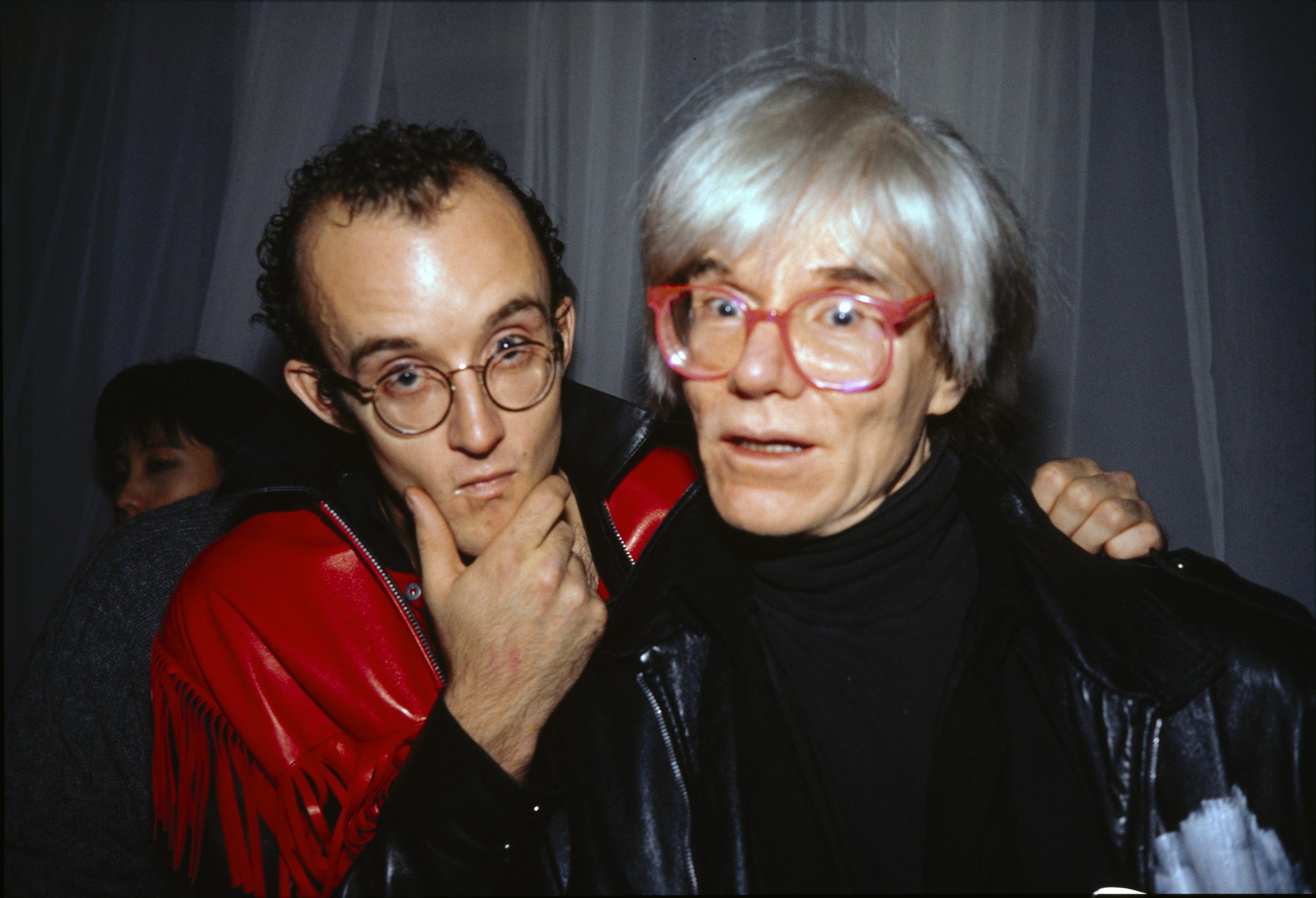If recent news is any measure (see: Brad Gooch’s Keith Haring biography released in March, Uniqlo’s Andy Warhol x KAWS collab and the family suing a Miami art gallery over fake Warhols), it’s clear interest in pop artists Andy Warhol and Keith Haring hasn’t cooled much. They continue to be influencers posthumously—even if the art world has moved on, it would seem the public is willing to consume work by these artists in perpetuity. During my research into Haring, Google’s ‘People also ask’ results included this query: “Why is Keith Haring stuff everywhere?”
Currently in Munich at Museum Brandhorst, “Andy Warhol & Keith Haring: Party of Life” demonstrates the persistent power of their distinct flavors of Pop, and fetes how these two friends created a lively world that extended beyond themselves and the borders of Manhattan. Museum Brandhorst is the first institution to bring these two artists together in a reunion of sorts: a snapshot of New York City from another age transported to Bavaria.

Franziska Linhardt, one of the curators of “Party of Life” told Observer that the two artists met “in New York in the early 1980s, and this exhibition reflects the overlap of their lives during that time. The title is borrowed from the theme of Keith Haring’s birthday parties and evokes the cosmos of the 1980s, capturing the essence of MTV, discos, voguing, celebrities and graffiti.”
The exhibition succeeds in presenting those finer details between the two artists while telling their stories separately and together throughout the rooms. As visitors descend the stairs into the main gallery, vivid colors reflect the zeitgeist as well as table cases housing Warhol’s Time Capsule 522, a journey back to push-button telephones, typed correspondence, notes taken on hotel stationery and compact drawings on paper from fellow artists.
SEE ALSO: Biennale Artist Jeffrey Gibson On Spirituality, Ecology in Politics and His Next Chapter
Warhol’s kaleidoscopic BMW Art Car M1 Group 4 (1979) in shades of teal, red, blue and yellow catches the eye, and Haring’s vivid shades of yellow, pink and green with his signature black outlines easily grab attention. A touch of wit hangs along the staircase wall: a small acrylic Haring painting of a person falling down a staircase and a baby crawling (Untitled: Yellow Falling Figure and Baby).

There are also displays of Haring’s designs on t-shirts, pins,
Though Warhol and Haring diverged in their trademark artistic styles, they shared many similarities. Warhol and Haring were both queer, born in Pennsylvania thirty years apart, grew up in religious environments, worked long hours and enjoyed the indulgences of ‘80s New York City. They even occasionally teamed up on projects. “We present a selection of the few collaborations they created together, such as paintings made as wedding gifts for Madonna,” Linhardt said, “as well as portraits they made of each other—Haring’s Andy Mouse, Warhol’s portrait of Keith Haring and Juan Dubose—and projects where they influenced one another.”

They ran in the same creative circles. There’s a bold 1986 portrait of Grace Jones by Warhol in one of the galleries. While Warhol transferred her image on canvas, Haring actually painted on Jones’ body at Robert Mapplethorpe’s studio.
The two artists each collaborated with Jean-Michel Basquiat in their own ways—Untitled (Blue Vase) shows the harmony of Basquiat’s and Haring’s drawings on one vessel—and the long list of other shared collaborators includes Richard Avedon, Joseph Beuys, William S. Burroughs, Fab 5 Freddy, Futura, Jenny Holzer, LA II, Malcolm McLaren, Yoko Ono, Kenny Scharf, Tseng Kwong Chi and Vivienne Westwood. Nan Goldin lensed an indelible image of the two artists standing next to each other that seems to beam their personalities: Haring with his chin between his thumb and index finger and Warhol caught off-guard. This photo symbolizes “Party of Life,” and its themes: Factory & Club 57, Gender & Desire, Scenesters, After the Party, and The Activist & The Observer.
Though the 1980s feels like a long time ago, the events that unfolded during those years have importance today. Linhardt unpacked why artists like Warhol and Haring still endure by pointing out that the era was marked by political repression, rampant capitalism, nuclear war fears and the emergence of HIV. “Warhol and Haring navigated this ambivalent decade, creating their artworks within this context,” he said. “Understanding the 1980s provides significant insight into the social dynamics and political conflicts of today. It’s no wonder that this period gave rise to diverse perspectives, reflected in the works of Warhol and Haring, which remain relevant even today.”

At its core, “Party of Life,” takes visitors on a visual journey: the highs and lows of living as queer artists in New York City during the height of big hair, synthesized music, conservative politics, cocaine, a bustling art market and the AIDS crisis. Warhol and Haring both made art in reaction to what was happening—to them and around them, and the spark between the two pop artists is a thread that can be felt throughout this exhibition.
Keith Haring once said in an interview that Andy’s life and work made his own art possible and that Warhol was the first true public artist. Warhol, for his part, was intrigued by this ‘Keith-thing’ and by the younger generation of artists energizing New York in the 1980s, shaking up the art establishment, and reminding him of the old days. “I believe that their shared experiences allowed them to understand each other well, support one another, and find inspiration in each other,” Linhardt concluded.
“Andy Warhol & Keith Haring: Party of Life” is at Museum Brandhorst through January 26.

